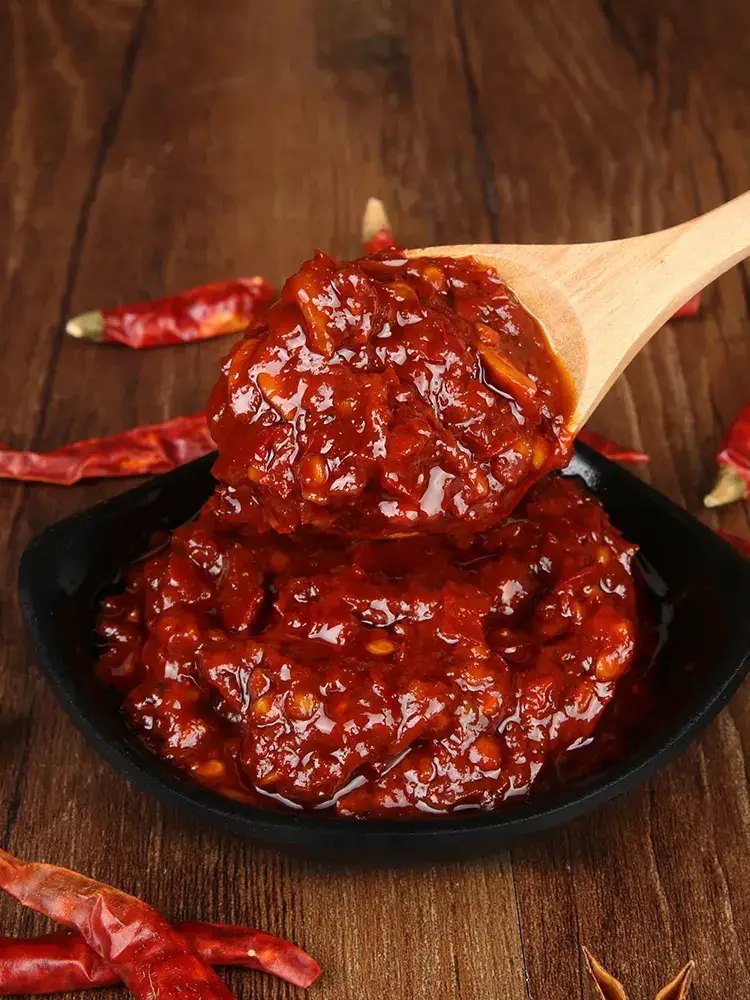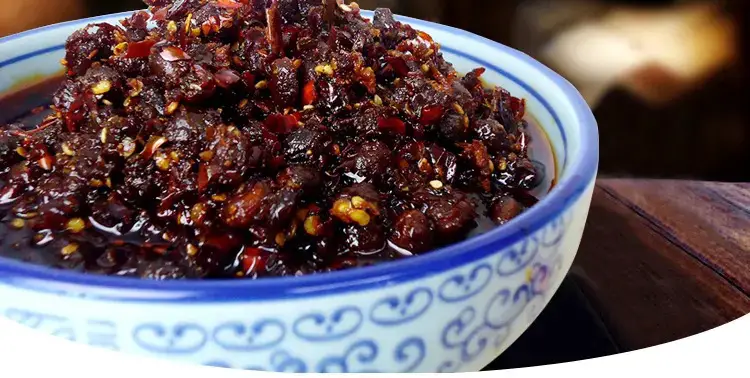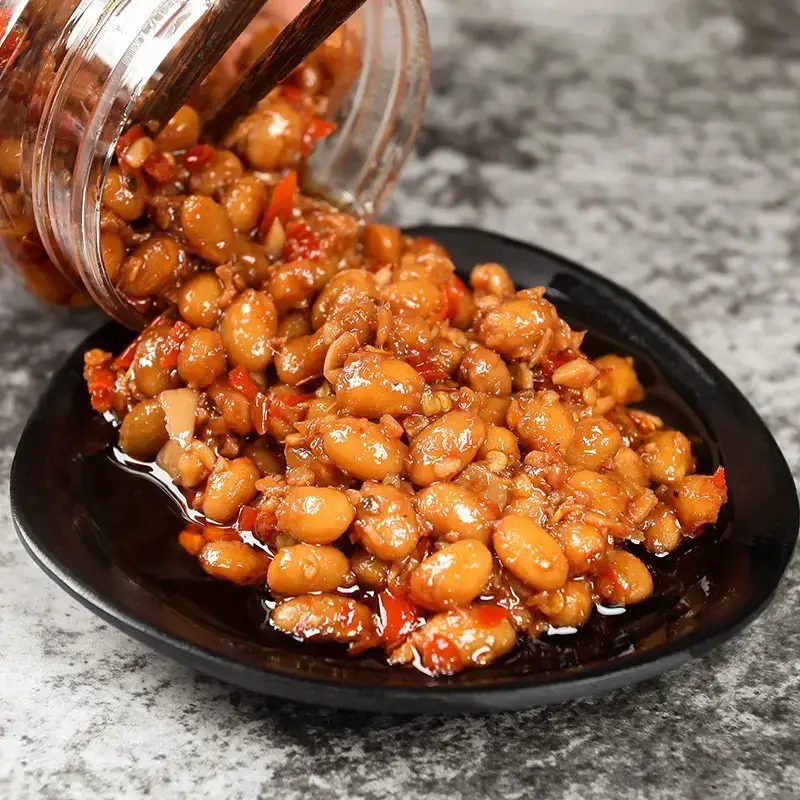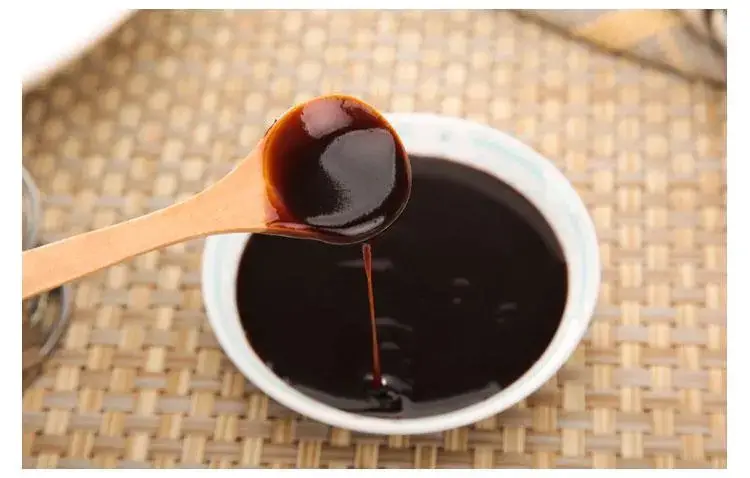Fermented bean paste is commonly made from ground soy or broad beans. Fermenting soy or ground beans is a traditional food preparation method common in the South, east, and Southeast Asia communities. The fermented bean paste is not consumed by itself but is used to flavor food and produces a savory and salty taste in foods such as soups, stew, and stir-fries. The common colors of fermented bean paste include dark brown, reddish brown, and light tan. The color difference may be due to the production process and adding ingredients such as bacteria, sugar, rice, pasteurized mantou, and wheat flour. Roasting the beans before grounding and the age of the beans also contribute to the color of the paste. This article will describe the Chinese fermented bean paste, preparation, eating, and storage.
Chinese fermented bean paste
Doubanjiang

Doubanjiang is one of the several varieties of Chinese bean paste and has other names such as fermented chili bean paste, broad bean chili sauce, Toban-djan, or douban. As some of the names indicate, the bean paste has a savory and hot flavor. The major ingredients in making the paste include flour, salt, soybeans, chili peppers, and broad beans. The chili peppers contribute to the hot flavor. The paste is commonly used in flavoring Sichuan dishes such as Shuizhu, Huo Guo, and mapo tofu. Doubanjiang has several varieties, but the most common is the Pixian doubanjiang, which takes more than three years to ferment.
Douchi

Douchi or tochi is also known as black beans, salty black beans, salted black beans, Chinese fermented black beans, or fermented black soybeans. It is a Chinese fermented bean paste made using salted black soybeans. It is mostly used in making dishes that use black bean sauce. The color of the paste is usually black because of the color of the beans used. The paste is mainly used in stir-fried flavoring vegetables such as leaf vegetables, bitter melon, and fish. Due to its high salt content, douche should not be consumed in large amounts and is only used for seasoning.
Dajiang

Dajiang is a fermented bean paste made from brine and soybeans. The production process involves soaking the soybeans in water overnight, boiling them in salty water, grounding them in a millstone, or using mortar. The resulting paste is shaped into cubes and dried in the shade for two to three weeks or until they are firm. The dried cubes are then tied with rice straw and placed in a warm room for fermentation. After fermentation, they are washed, sun-dried, and aged in brine before charcoal and chilies are added, and the paste can be eaten raw or used for flavoring vegetables.
Tianmianjiang

Tianmianjiang is also known as sweet wheat paste, sweet flour sauce, or sweet bean sauce and is smooth and thick. It is commonly black or dark brown because the beans used in its preparation are black and because of the fermentation process. Although it is categorized as a bean paste, flour is the major ingredient in its preparation. One portion of soybeans is used for every 19 portions of flour. The fermentation process is kick-started by dried and stale steamed bread wrapped in miangua and placed in the dark until it is completely dry. It is used as a sauce for common Chinese dishes. Unlike many sauces, it is sweet.
Huangjiang (yellow soybean paste)

The major ingredients for this fermented paste include wheat flour, water, salt, and yellow soybeans. The paste is black, dark brown, or light brown. It is commonly used in northern China as well as in Beijing cuisines. It is commonly used in fried sauce noodles prepared by frying ground pork with soybean paste and then pour the mixture on thick wheat flour noodles. The yellow soybean paste is no longer viewed as a traditional food because it is currently manufactured and packaged for use in modern cuisines across the globe.
How to make fermented bean paste
You can make a fermented bean paste through an easy recipe that takes only three stages.
Equipment
- Plastic or glass jar
- Cooking pot
- Blender
- Source of heat
- Stirrer
Ingredients
- Soybeans
- Seal salt
- ¼ Garlic
- 1 Onion
- 1/8 tablespoon of Pepper
- ½ teaspoon of cumin
- Water
- apple cider vinegar
Process/ instructions
- Clean the soybeans thoroughly and place them in a jar
- Add boiling water to cover the bean completely
- Allow the soaking water to cool, and add apple cider vinegar
- Allow the beans to soak for two days
- Remove the beans and rinse thoroughly
- Boil the beans until they are soft
- Rinse
- Blend Soybeans, ¼ Garlic,1 Onion, 1/8 tablespoon of Pepper, and ½ teaspoon of cumin until you obtain a perfect paste
- Add enough salt
- Place in an air-tight glass container
- Keep in a warm room for 3 days
- Transfer the paste to a fridge
How to eat fermented soybean paste
You can eat soybean paste and other foodstuffs such as vegetables and soaps. The paste is usually highly salty and spicy, and hence it is not advisable to eat it alone.
How to use fermented bean paste
You can use the fermented soybean paste as a seasoning for soups, stews, and stir-fries. It enhances the flavor of the food and is a great source of protein. You can also use it as a basic ingredient in making soybean soap.
Is fermented bean paste good for you?
Yes, the fermented bean paste is a perfect source of protein and makes your soups and vegetables taste good. It is a great source of protein and, therefore, an excellent seasoning ingredient.
How long is fermented soybean paste good for?
The fermented soybean can last up to six months, depending on the storage. Keeping it refrigerated ensures you enjoy your fermented bean past for five to six months.
Conclusion
Fermented bean paste is an excellent food seasoning ingredient. It ensures that your food has excellent taste and increases the nutritional content of the food. Preparing the fermented bean paste at home enables you to add your preferred spices, making the paste an excellent food seasoning ingredient.
